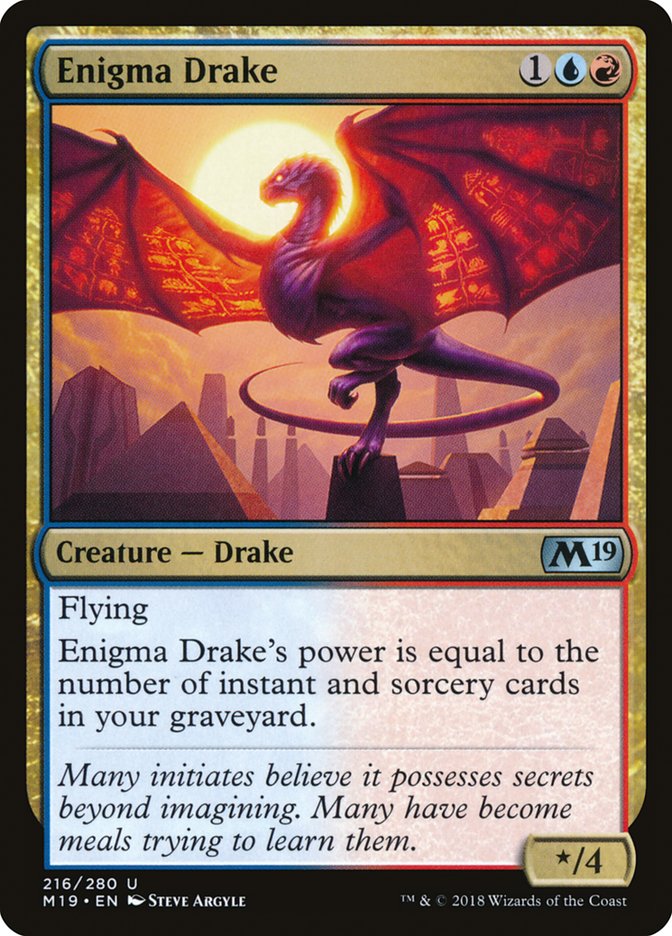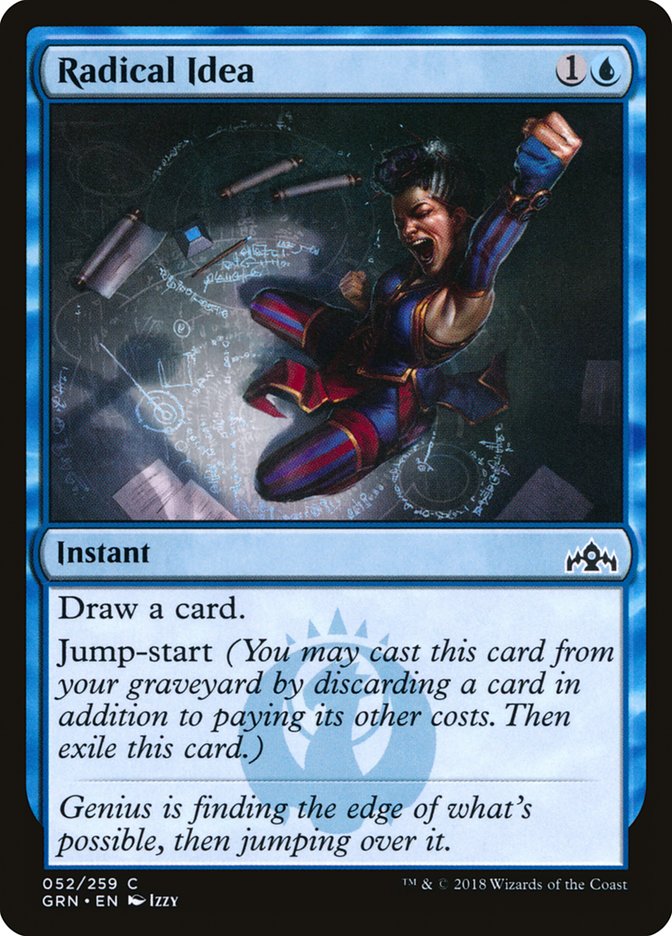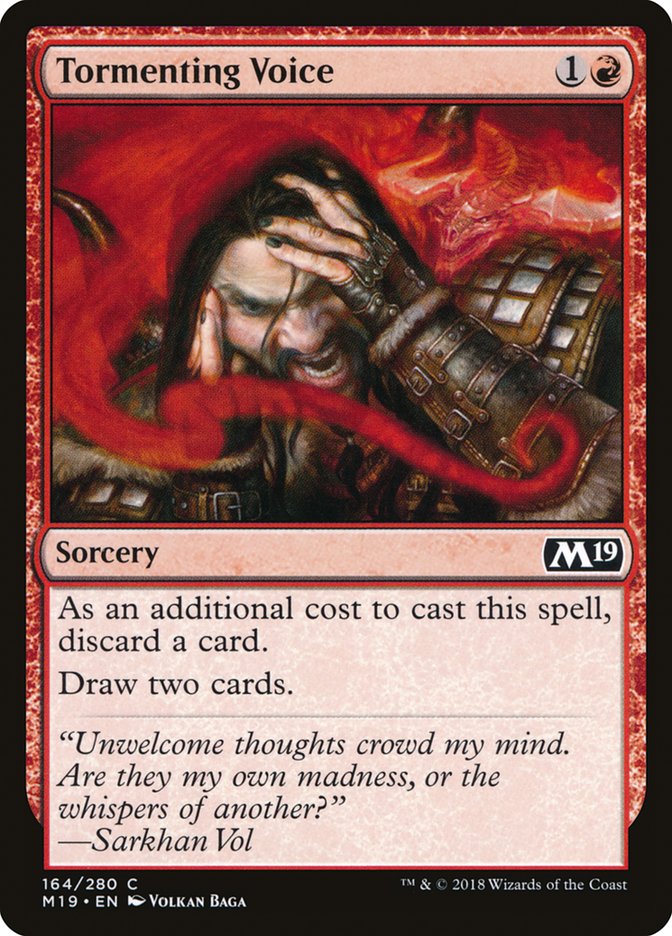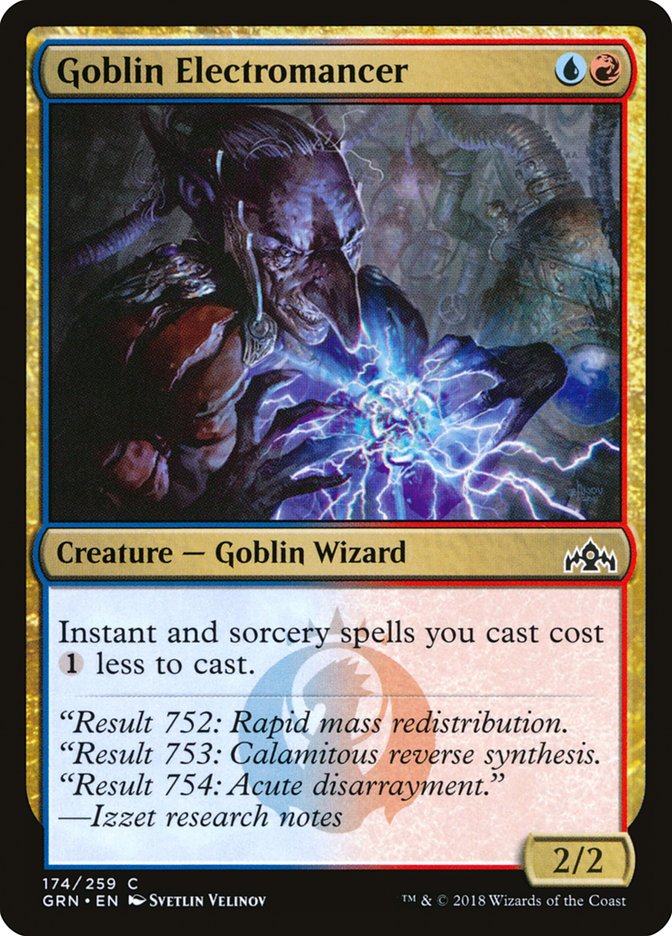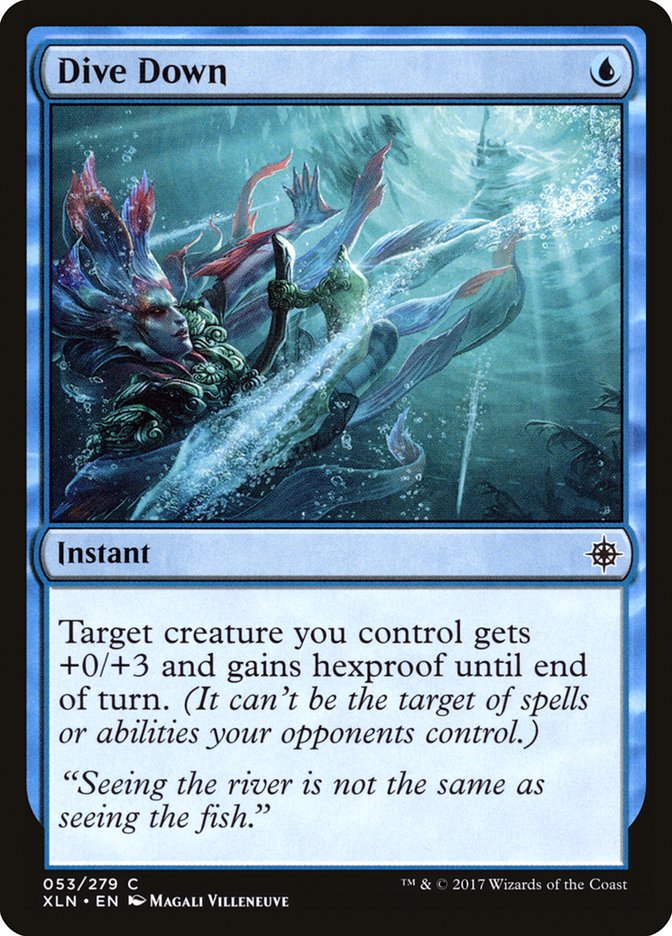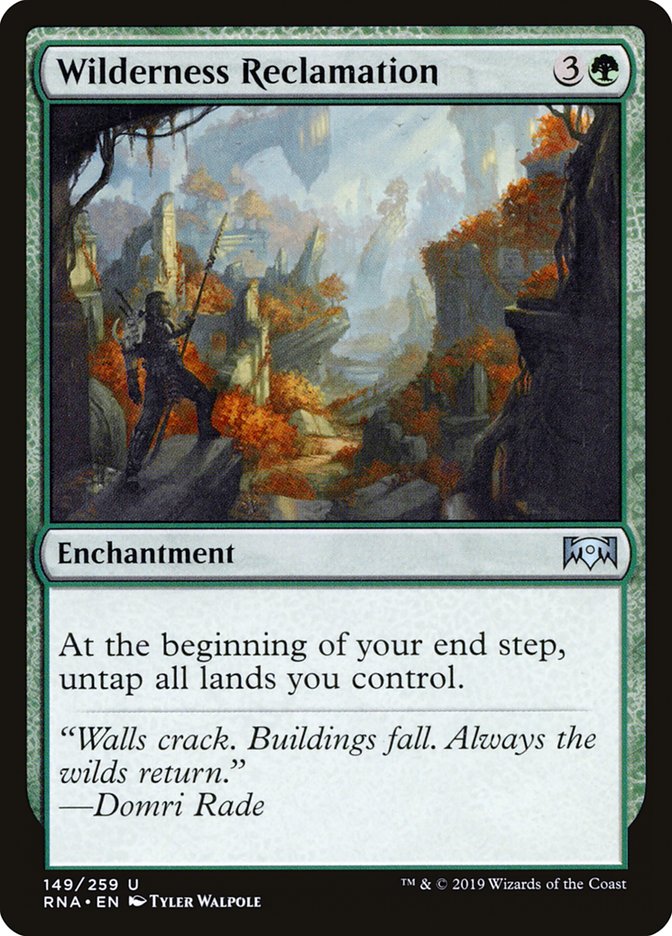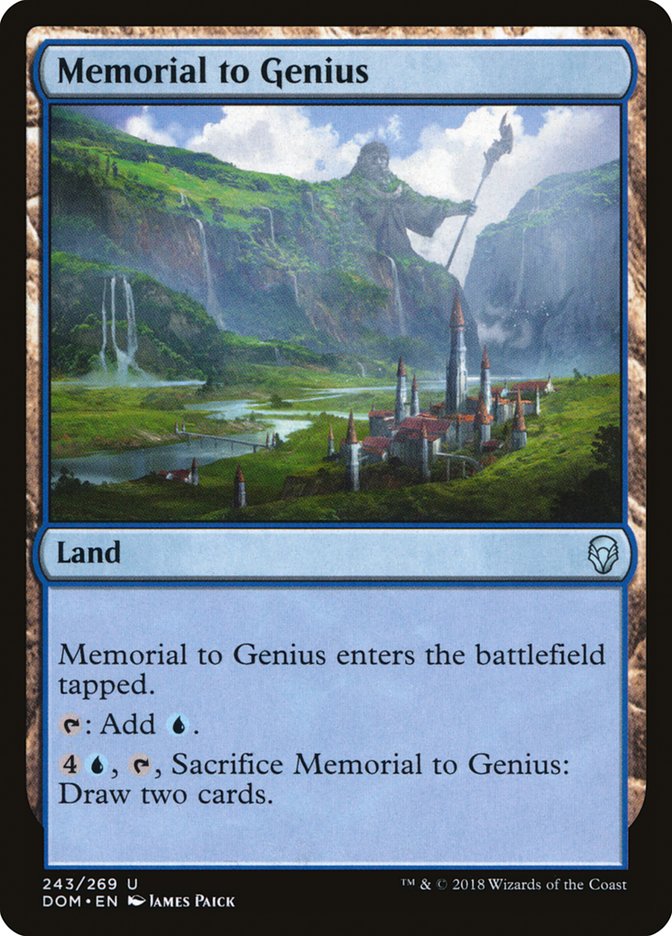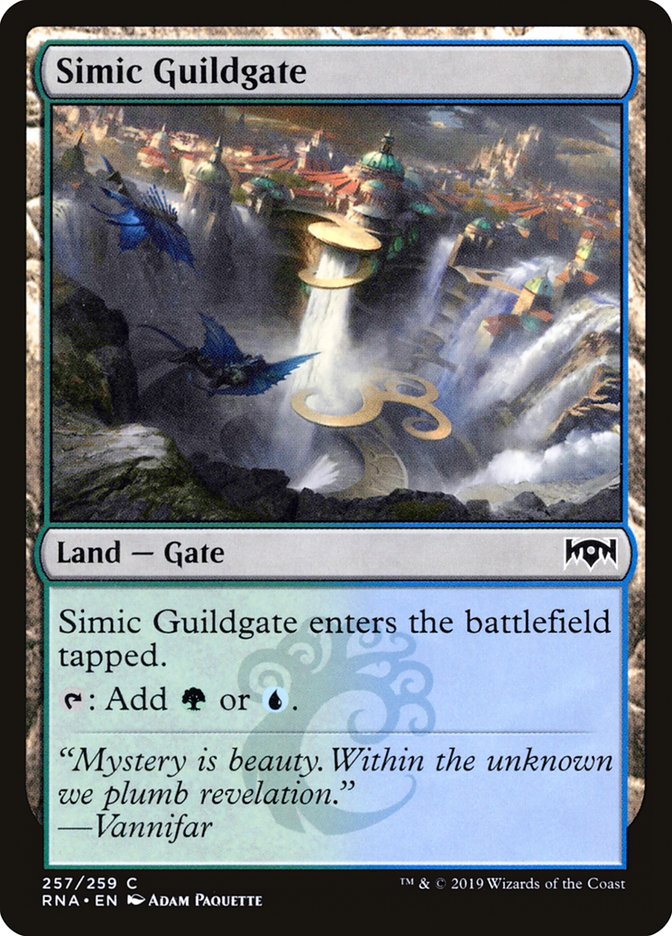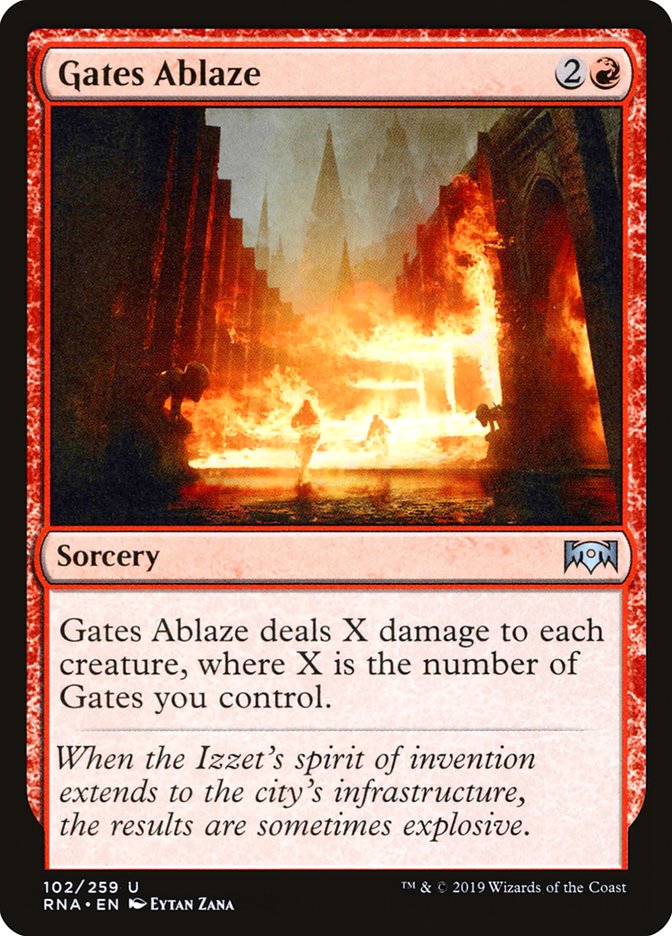Standard is changing. Not in the way that we’re used to it shifting, either. Ravnica Allegiance Standard is dealing with the ripples that any format experiences during its infancy, but the way that decks are being defined and the things they’re using to win is fundamentally different from what we’re used to in Standard.
Pillars
Traditionally, Standard card pools are small enough that archetypes are defined by the cards holding them up or the reasons that a deck is even viable in the first place.
During a previous Standard format, for example, red decks and control decks were both defined heavily by the fact that Goblin Chainwhirler and Teferi, Hero of Dominaria were strong enough to support all of the cards around them. This put an emphasis on the cards that made everything around them possible.
This meant playing similarly against all the Goblin Chainwhirler decks; Teferi, Hero of Dominaria decks; The Scarab God decks; and so on. With the decks playing so similarly to one another, people became used to the play patterns, and some of the matchups ended up feeling pretty stale after a while, although the decks were evolving. The specifics of the decks were changing, but what the decks were trying to accomplish was ultimately staying the same.
With Ravnica Allegiance, we’re steadily moving away from this system. Check out the following two lists:
Creatures (14)
Lands (20)
Spells (26)

Creatures (12)
Lands (21)
Spells (27)

These are both being enabled by the same cards. Each is a pile of cantrips, some red removal, and Crackling Drake. What they’re each trying to fight against is different and the difference is in payoff cards:
This is normal for Standard today. As we see more powerful cards printed to support different archetypes, the build-arounds in each set will define decks. This means the pillars that we were using to group the “pile of good cards” strategies in Standard will still play the same roles that they were previously, but they won’t always be what’s setting the terms of engagement.
Paying Attention to the Payoff Cards
Identifying what payoff cards a deck is using in order to win will inform the play patterns that will play the best against different kinds of decks. Take the previous Crackling Drake decks. Both are using similar strategies, but the ways that they’ll be attacked aren’t the same.
Creatures (14)
Lands (20)
Spells (26)

Against a deck sporting a pile of Arclight Phoenixes, it’ll be hard to out-grind the deck’s namesake without something to the effect of Vraska’s Contempt to permanently deal with Phoenixes by exiling them.
Creatures (12)
Lands (21)
Spells (27)

The same can’t be said for the more dedicated Drakes deck. The clunky, expensive removal in the deck will be punished more heavily by Dive Down and will allow the Drakes player to punish players for overloading on these sorts of effect.
This difference is something that any of the black decks leaning on their removal will need to be cognizant of as they’re playing, as it will influence how to prioritize removal versus pressure against the decks.
So, what are the giveaways for decks that can drop clues as to what you’re playing against?
Spells that allow their caster to more effectively spin their wheels (cast spells for the sake of casting spells) will be a reasonable giveaway for Arclight Phoenixes being present.
Both versions of the deck are interested in Chart a Course and Discovery by virtue of their respective power levels, but Arclight Phoenix demands casting spells and doesn’t really care what they do.
Drakes need to untap with their creatures and are weaker to more traditional forms of removal. This will mean Enigma Drake over Arclight Phoenix and more things to protect it. Cast Down, for example, will overperform in this matchup, where it may be unimpressive against the recursion that Arclight Phoenix offers.
In the same way that there are multiple ways to build around Crackling Drake, not all Wilderness Reclamation decks are constructed the same way.
Planeswalkers (2)
Lands (24)
Spells (34)
- 4 Opt
- 3 Search for Azcanta
- 4 Revitalize
- 4 Nexus of Fate
- 4 Root Snare
- 3 Chemister's Insight
- 4 Growth Spiral
- 4 Depose
- 4 Wilderness Reclamation
Sideboard

Last weekend, Luckesh won an online Mythic Championship Qualifier with what we’ve come to expect to see from Wilderness Reclamation – Nexus of Fate and Search for Azcanta shenanigans. On the SCG Tour, we also saw Ali Aintrazi win with an incredibly similar deck, with some notable differences:
Creatures (7)
Lands (25)
Spells (28)

The easiest giveaway to know that you’re playing against a different deck from the typical Bant Nexus shell is in the manabase.
Giving up Teferi, Hero of Dominaria and casting Frilled Mystic are difficult tasks, but these lands make it work. What does this mean when playing against it? It means that the interaction available to the Nexus player will be different.
Esper Control can comfortably counter spells out of Luckesh’s deck without having to worry whether the counterspell will resolve. Blue decks aren’t afforded that luxury against the Simic Nexus version of the deck, and this forces control decks to play more conservatively against it.
This is all information that can be gained from lands. Speaking of…
Creatures (4)
Lands (24)
Spells (32)
- 1 Forest
- 1 Island
- 4 Nexus of Fate
- 4 Guild Summit
- 2 Chemister's Insight
- 3 Expansion
- 2 Lava Coil
- 4 Circuitous Route
- 4 Growth Spiral
- 3 Wilderness Reclamation
- 4 Gates Ablaze
Sideboard

Against the previous iterations of Nexus of Fate, playing out all of one’s creatures was generally rewarded, as getting to attack with everything through Root Snare was a big deal.
Not anymore.
Seeing more than just a copy of Simic Guildgate here or there is an enormous signal, and it informs you how sizing is going to matter, what subsection of spells the opponent is planning on leaning into, and the fact that they aren’t going to have Root Snare.
Lava Coil is the primary piece of removal that this deck will have; otherwise, Gates Ablaze is all it’s doing to interact without Expansion getting involved. This means that attacks are safe, spells are resolving, and noncreature permanents are sticking around indefinitely.
In the same way that Nexus of Gates is a deck that uses Wilderness Reclamation without Search for Azcanta to abuse with it, there’s also a Wilderness Reclamation deck that completely eschews Nexus of Fate:
Lands (19)
Spells (41)
- 2 Mountain
- 3 Island
- 4 Shock
- 4 Opt
- 3 Lightning Strike
- 2 Search for Azcanta
- 2 Primal Amulet
- 2 Sinister Sabotage
- 2 Radical Idea
- 4 Chemister's Insight
- 4 Expansion
- 4 Growth Spiral
- 4 Wilderness Reclamation
- 1 Electrodominance
Sideboard

This deck is more of a control deck with an unfair finisher than it is a deck doing exclusively unfair things. In a lot of ways, Temur Reclamation has a plan quite similar to the Izzet Drakes deck: spin wheels, cast a few spells, they die if they can’t interact with the last two.
What’s worth noting about this deck is that everything that it has for interaction is trading one-for-one. The other Wilderness Reclamation decks all have something to the effect of Root Snare or Gates Ablaze that can buy time when the opponent has any number of creatures. This means that it’ll struggle coming back from behind without just trying to outright combo-kill the opponent.
What’s important to note is that, in spite of how Wilderness Reclamation is what all of these decks have in common, the ways that we’re navigating games against them are wildly different, with the important decisions varying wildly depending on the deck being piloted against them.
These are the things to consider when trying to read an opponent in order to inform the in-game decisions that you’re making.
Building Your Own Decks
All the choices in the above decks came about as a result of what the deck was trying to accomplish.
Taking these things into account will help inform what cards are the most effective in the strategy of the deck that you’re building and the weaknesses you need to shore up.
Creatures (4)
Lands (24)
Spells (32)
- 1 Forest
- 1 Island
- 4 Nexus of Fate
- 4 Guild Summit
- 2 Chemister's Insight
- 3 Expansion
- 2 Lava Coil
- 4 Circuitous Route
- 4 Growth Spiral
- 3 Wilderness Reclamation
- 4 Gates Ablaze
Sideboard

Remember the Nexus of Gates deck from before?
It’s not an accident that the cards in the sideboard are looking to do three things:
1. Shore up aggressive matchups.
2. Interact with noncreatures.
3. Provide new angles of attack.
This is Sasser acknowledging how this iteration of the deck is fundamentally weak to aggressive strategies by virtue of all its lands entering the battlefield tapped, only being able to interact with creatures before sideboarding, and threat-light against decks that are able to interact with the things it’s doing because of all the enablers in the deck. Shoring up those matchups should be a priority.
As we move forward in Standard, with the format remaining as diverse as it is, success will hinge on being able to extrapolate tons of information on what the opponent is trying to do, based on cards that they’ve already played. Understanding the nuances of how decks are choosing to use their pillars of the format will help take your in-game decisions and sideboarding to the next level.
Whenever you’re building your next deck, consider not only what it’s using to enable its strategies, but also what it’s enabling, and how your opponents will be planning to exploit any holes that you’ve left open. If you’re planning to do it to your opponents, you’d better believe that they’re planning the same.




